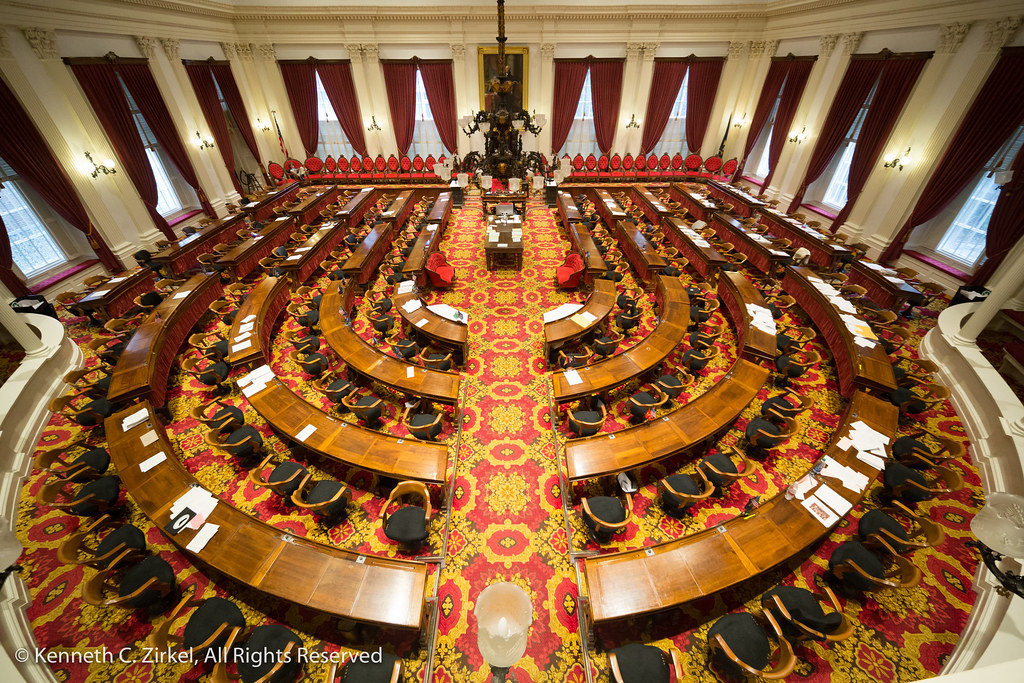Job Title: Marketing and Communications Director
Reports To: President, Vermont Chamber of Commerce
Employment Type: Full-Time, Salaried
Organization Overview: The Vermont Chamber of Commerce is Vermont’s leading not-for-profit business organization dedicated to advancing our state’s economy. We advocate for businesses, build community, and provide valuable resources statewide. Our enterprise includes the Vermont Chamber of Commerce 501(c)(6) and the Vermont Chamber Foundation 501(c)(3), doing business as The Vermont Futures Project.
Mission Statement: The Vermont Chamber of Commerce is dedicated to advancing the Vermont economy. Trusted by the businesses that make living, working, and thriving in Vermont possible, we prioritize collaboration and uphold the core values that define our state.
Diversity, Equity, and Inclusion Belief Statement: The Vermont Chamber of Commerce believes in supporting a vibrant economy through a lens of diversity, equity, and inclusion. We are committed to breaking down systemic barriers, promoting acceptance, and ensuring a welcoming business environment. Vermont’s economic growth and prosperity depend on our ability to embrace all people, regardless of race, religion, national origin, geographic location, age, gender identity, sexual orientation, or disability.
Position Overview: The Marketing and Communications Director plays a pivotal role in promoting the Vermont Chamber enterprise by ensuring clear and effective communication, high-quality content, consistent branding, and meaningful interactions with stakeholders. Reporting directly to the President, this full-time, salaried position is responsible for developing, executing, and managing an enterprise-wide marketing and communications strategy that advances our mission and goals.
The successful candidate will collaborate with the leadership team to develop and implement the strategic communications and marketing vision, leading initiatives related to the overall promotion of the Vermont Chamber. This position will be responsible for executing regular communications promoting the work of the Vermont Chamber of Commerce to our members, policy leaders, the press, and the public. We are looking for a team player with strong organizational, communication, and marketing skills who can manage multiple programs simultaneously and understands that a successful business community is important to the economic health of Vermont.
Core Competencies:
- Strategic Thinking and Analytical Skills: Demonstrates strong strategic thinking, planning, and execution abilities to develop and implement long-term marketing and
communications strategies aligned with organizational objectives. Uses analytical skills to
evaluate market trends and data, informing strategies and measuring success. - Exceptional Communication Skills: Exhibits exceptional written and verbal communication abilities, including creating compelling content, engaging diverse audiences, and maintaining attention to detail in all aspects of work.
- Collaboration: Possesses strong interpersonal skills with the ability to work effectively across diverse teams and with various stakeholders.
- Digital Marketing Expertise: Proficiency in digital marketing platforms, content creation, graphic design, and analytics.
- Project Management: Excellent organizational skills with the ability to manage multiple projects simultaneously and meet deadlines.
- Natural Curiosity: Displays a natural curiosity about member business operations, enhancing the ability to tailor communications effectively.
Key Responsibilities:
- Strategy Development and Implementation
- Collaborate with the Chamber leadership team to create and implement a comprehensive marketing and communications strategy that advances the organization’s mission and objectives.
- Identify key messages and channels to effectively reach target audiences, including members, partners, and the broader community.
- Lead the execution of the strategy across all platforms and channels, collaborating with the Director of Program Communications.
- Content Creation and Brand Management
- Create and manage content on Chamber enterprise websites, ensuring it is current, engaging, and optimized for search engines.
- Develop and maintain a content calendar aligned with our strategic communications goals in collaboration with the Director of Program Communications.
- Produce content and graphics for Chamber communications as needed.
- Maintain and enhance the organization’s brand identity, ensuring consistency across all communications and promotional materials.
- Media and Stakeholder Relations
- Build and maintain relationships with media outlets to enhance visibility and influence.
- Prepare and distribute news releases, op-eds, statements, and other announcements to gain positive attention for the organization, events, and advocacy work.
- Develop and implement strategies to engage members, partners, and stakeholders through effective communication and marketing initiatives.
- Collaborate with the government affairs team to promote legislative initiatives and policy positions by developing and managing regular communications and email alerts for our advocacy efforts.
- Event Promotion
- Coordinate marketing efforts for events and programs across the Vermont Chamber enterprise by developing promotional campaigns to maximize event participation and impact.
- Analytics and Reporting
- Monitor and analyze the effectiveness of marketing and communication efforts using key performance indicators.
- Prepare regular reports for the leadership team to inform decision-making and strategy adjustments.
- Quality Assurance
- Provide proofreading support and input regarding written materials prepared by staff to ensure clear and consistent messaging.
- Project Management and Special Projects
- Manage multiple projects simultaneously, ensuring deadlines are met.
- Undertake special projects as assigned, contributing to the organization’s overall success.
Education and Experience:
- Preference will be given to candidates with a proven track record in marketing, communications, and graphic design work.
- Demonstrated ability to foster strong interpersonal relationships.
- Knowledge of Microsoft products, databases, and willingness to learn new applications.
- Demonstrated ability to be highly organized with strong attention to detail.
Work Environment and Application:
This position is hybrid-remote with at least one day a week at the Berlin office. This position may require occasional in-state travel and work outside of traditional office hours. Interested candidates should send a cover letter with LinkedIn profile and resume to jobs@vtchamber.com.








